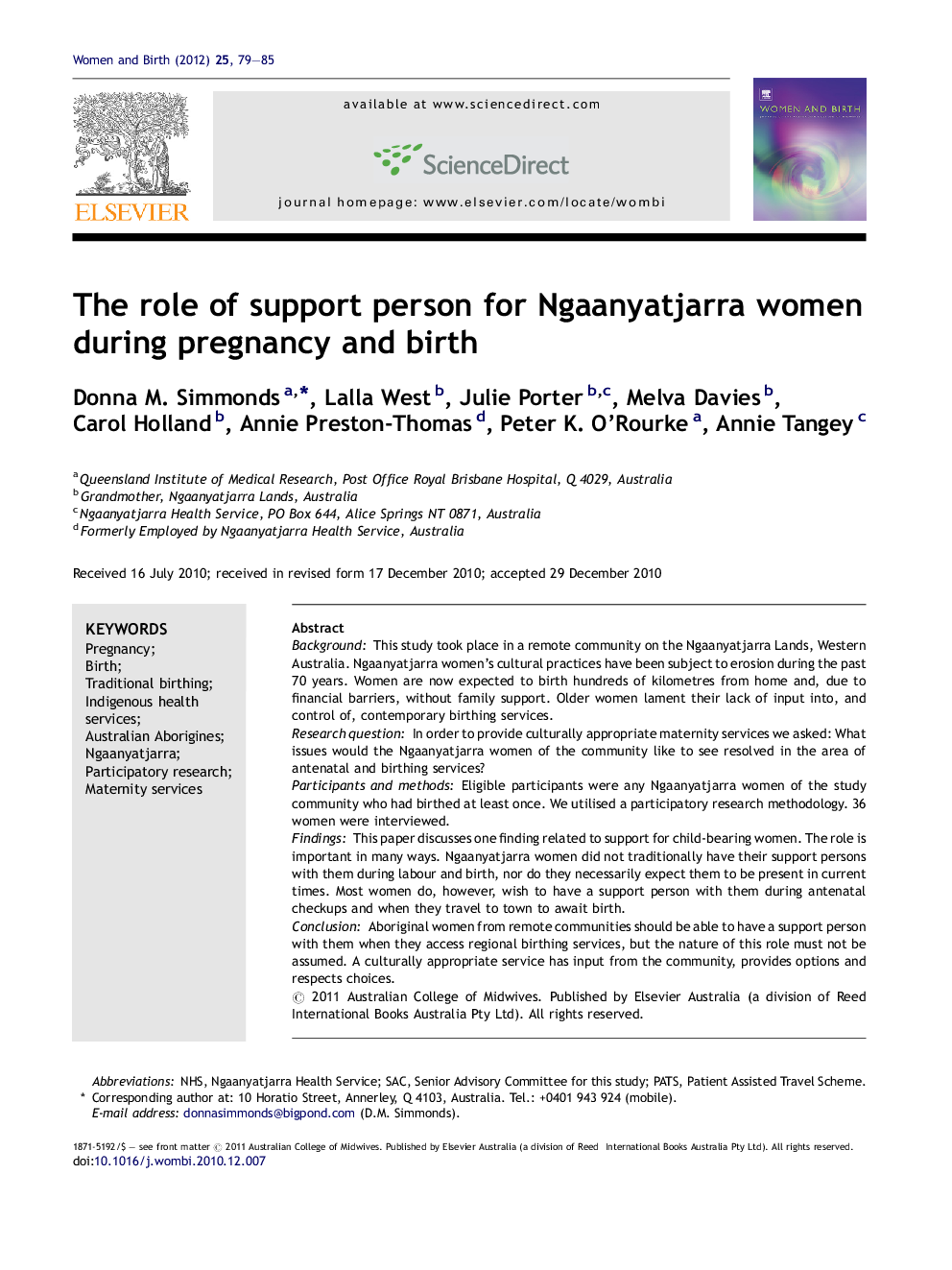| Article ID | Journal | Published Year | Pages | File Type |
|---|---|---|---|---|
| 2636691 | Women and Birth | 2012 | 7 Pages |
BackgroundThis study took place in a remote community on the Ngaanyatjarra Lands, Western Australia. Ngaanyatjarra women's cultural practices have been subject to erosion during the past 70 years. Women are now expected to birth hundreds of kilometres from home and, due to financial barriers, without family support. Older women lament their lack of input into, and control of, contemporary birthing services.Research questionIn order to provide culturally appropriate maternity services we asked: What issues would the Ngaanyatjarra women of the community like to see resolved in the area of antenatal and birthing services?Participants and methodsEligible participants were any Ngaanyatjarra women of the study community who had birthed at least once. We utilised a participatory research methodology. 36 women were interviewed.FindingsThis paper discusses one finding related to support for child-bearing women. The role is important in many ways. Ngaanyatjarra women did not traditionally have their support persons with them during labour and birth, nor do they necessarily expect them to be present in current times. Most women do, however, wish to have a support person with them during antenatal checkups and when they travel to town to await birth.ConclusionAboriginal women from remote communities should be able to have a support person with them when they access regional birthing services, but the nature of this role must not be assumed. A culturally appropriate service has input from the community, provides options and respects choices.
